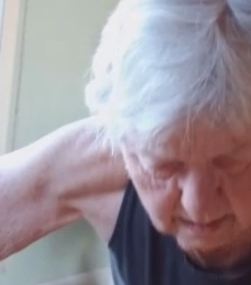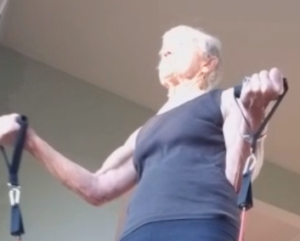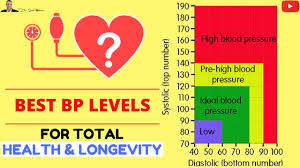It’s come to the attention of medical professionals around the world that there’s a habit that is rapidly destroying the health of many of their patients. It’s called… sitting!
Why don’t we move more?
- Our jobs keep us glued to the computer for hours.
- It’s raining and cold outside.
- My feet hurt. My back aches. My knee isn’t working.
- I have no time.
- It’s so dark outside.
- I can’t stand the gym. It’s so noisy and everyone is looking at me.
Sitting by itself as opposed to standing all day… is expected… and healthy. But today, especially in the U.S., sitting hours upon hours each day has become habitual. How did this happen? Slowly… and with the introduction of television, video games, the internet and social media… this new “sitting disease” has infected a large portion of our population. And it’s especially disastrous for our children.[/wpdiscuz-feedback]
Would it help to understand the risks of a sedentary lifestyle? You know them already. Here is a reminder, with references.
1. Cardiovascular Disease
Prolonged physical inactivity is a significant risk factor for cardiovascular diseases (CVD), including coronary artery disease, heart attacks, and stroke. A sedentary lifestyle can lead to poor circulation, higher blood pressure, and unhealthy lipid profiles (e.g., high levels of LDL cholesterol and triglycerides).
References:
- Thyfault, J. P., & Booth, F. W. (2011). “Lack of exercise is a major cause of chronic diseases.” Progress in Cardiovascular Diseases, 53(6), 9-17. [DOI: 10.1016/j.pcad.2011.02.003]
- Wen, C. P., & Wu, H. (2014). “Sedentary behavior and health: A review of the literature.” American Journal of Public Health, 104(3), e36-e44. [DOI: 10.2105/AJPH.2013.301206]
2. Obesity and Metabolic Syndrome
Sedentary behavior, especially when combined with poor diet, leads to weight gain and obesity, which in turn are risk factors for developing metabolic syndrome. Metabolic syndrome includes conditions such as abdominal obesity, high blood sugar, high blood pressure, and abnormal cholesterol levels, all of which increase the risk of type 2 diabetes and CVD.
References:
- Janssen, I., & LeBlanc, A. G. (2010). “Systematic review of the health benefits of physical activity and fitness in school-aged children and youth.” International Journal of Behavioral Nutrition and Physical Activity, 7(40). [DOI: 10.1186/1479-5868-7-40]
- Lee, I. M., & Paffenbarger, R. S. (2000). “Physical activity and coronary heart disease in men: The Harvard Alumni Health Study.” Circulation, 102(9), 927-932. [DOI: 10.1161/01.CIR.102.9.927]
3. Type 2 Diabetes
Sedentary behavior is a key contributor to the development of insulin resistance and type 2 diabetes. A lack of physical activity decreases the body’s ability to regulate blood sugar levels and increases the risk of developing diabetes.
References:
- Bennie, J. A., De Cocker, K., & Teychenne, M. (2016). “The health risks of sedentary behavior: A review of the literature.” American Journal of Preventive Medicine, 50(2), 121-131. [DOI: 10.1016/j.amepre.2015.08.024]
- Dunstan, D. W., et al. (2012). “Breaking up prolonged sitting reduces postprandial glucose and insulin responses.” Diabetologia, 55(3), 579-588. [DOI: 10.1007/s00125-011-2345-1]
4. Musculoskeletal Problems
Sedentary behavior leads to weakened muscles, reduced flexibility, and poor posture, all of which can result in chronic pain and discomfort, particularly in the lower back, neck, and shoulders. Long periods of sitting can also lead to poor bone health, increasing the risk of osteoporosis.
References:
- Danka, A. A., & Baker, L. R. (2013). “Impact of physical inactivity on musculoskeletal health.” International Journal of Clinical Rheumatology, 8(6), 513-522. [DOI: 10.2217/ijr.13.33]
- Owen, N., et al. (2010). “Sedentary behaviour: A growing cause of diabetes and cardiovascular disease.” Diabetes Care, 33(2), 244-248. [DOI: 10.2337/dc09-1296]
5. Mental Health Issues
There is increasing evidence that sedentary behavior is associated with poor mental health outcomes, including higher rates of depression, anxiety, and cognitive decline. Physical inactivity can contribute to reduced mood-regulating neurotransmitter levels (e.g., serotonin), which can exacerbate mental health conditions.
References:
- Teychenne, M., et al. (2010). “The association between sedentary behaviour and mental health among adults: A review.” International Journal of Behavioral Nutrition and Physical Activity, 7(1), 1-12. [DOI: 10.1186/1479-5868-7-56]
- Biddle, S. J., & Asare, M. (2011). “Physical activity and mental health in children and adolescents: A review of reviews.” British Journal of Sports Medicine, 45(11), 873-880. [DOI: 10.1136/bjsports-2011-090185]
6. Increased Risk of Certain Cancers
Sedentary behavior is linked to a higher risk of various cancers, including colon, breast, and endometrial cancer. This association is thought to be due to increased body fat, reduced circulation, and hormonal changes resulting from lack of physical activity.
References:
- Katzmarzyk, P. T., & Lee, I. M. (2012). “Sedentary behavior and life expectancy in the USA: A cause-deleted life table analysis.” BMJ Open, 2(4), e000828. [DOI: 10.1136/bmjopen-2012-000828]
- Patel, A. V., et al. (2010). “Leisure time spent sitting and site-specific cancer risk in a large cohort of U.S. adults.” American Journal of Epidemiology, 172(4), 419-428. [DOI: 10.1093/aje/kwq158]
7. Increased Mortality
One of the most concerning consequences of a sedentary lifestyle is an increased risk of premature death. Studies show that even among those who engage in regular physical activity, extended periods of sedentary behavior can significantly raise the risk of early mortality.
References:
- Biswas, A., et al. (2015). “Sedentary time and its association with risk for disease incidence, mortality, and hospitalization in adults: A systematic review and meta-analysis.” Annals of Internal Medicine, 162(2), 123-132. [DOI: 10.7326/M14-1651]
- Katzmarzyk, P. T., & Lee, I. M. (2012). “Sedentary behavior and life expectancy in the USA: A cause-deleted life table analysis.” BMJ Open, 2(4), e000828. [DOI: 10.1136/bmjopen-2012-000828]
Conclusion
A sedentary lifestyle is a major contributor to several chronic diseases and mental health conditions. Regular physical activity can mitigate many of these risks, underscoring the importance of integrating movement into daily routines. Even short breaks from prolonged sitting can significantly improve health outcomes.
Could Shaklee supplements help?
How about lifting your mood with MoodLift, St. John’s Worth and other calming herbs?
How about a drink that gets your body ready to exercise?
How about an after-work-out recovery drink that soothes and rebuilds muscles?
How about a safe, non-stomach-damaging herbal compound that interrupts the pain path to relieve chronic pain?
How about a joint health supplement that helps joints work better?
Maybe a simple comprehensive multivitamin, Vita Lea, absorbable, complete.
I invite you to click on the links to the products I use daily to keep me moving comfortably.
Tie your exercise to other habits in your daily routine and before long, you’ll be out there moving your body and feeling all the benefits.
Be well, Do well, and Keep moving! Betsy
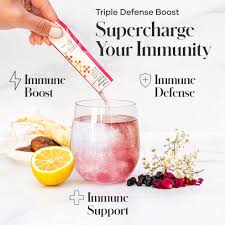 Triple Defense has vitamin C, zinc, vitamin D, plant-based adaptogens, (yeast Beta-Glucan, Reishi Mushroom extract, Ginseng root extract) elderberry, echinacea and Quercetin, all of which support, boost and defend your immunity. These ingredients play a critical role in boosting the Natural Killer cell activity by 3x and increasing lymphocytes by 5.8x. Good news for your immune function.
Triple Defense has vitamin C, zinc, vitamin D, plant-based adaptogens, (yeast Beta-Glucan, Reishi Mushroom extract, Ginseng root extract) elderberry, echinacea and Quercetin, all of which support, boost and defend your immunity. These ingredients play a critical role in boosting the Natural Killer cell activity by 3x and increasing lymphocytes by 5.8x. Good news for your immune function.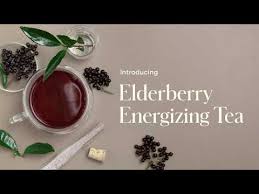 my.
my. hat if you could design a personal supplement plan? Now, you can.
hat if you could design a personal supplement plan? Now, you can. 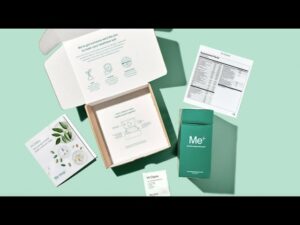

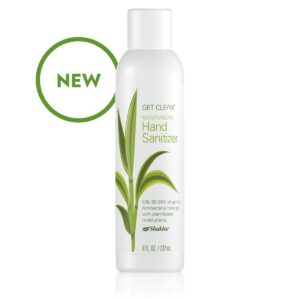
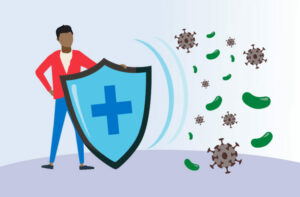
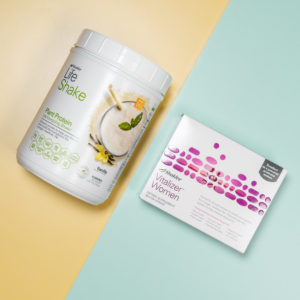
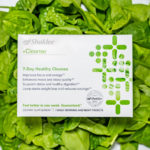
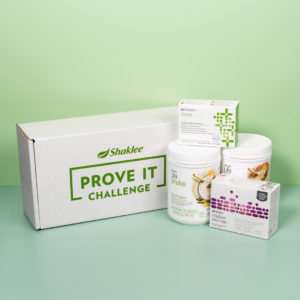 and homocystine levels to an attitude of “I feel great.” Unusual from a group of people ranging in age from 50 on up. Not typical.
and homocystine levels to an attitude of “I feel great.” Unusual from a group of people ranging in age from 50 on up. Not typical.